The Government Museum Kota is housed in a three-storied east-facing palace called Brij Vilas. Built in 1793, the palace is named after Maharani Brijkanwar, wife of Maharao Durjansal Kotah. It is situated in Chatra Vilas Garden in the most tranquil and verdant part of town and is very accessible with ample parking.
The museum displays a collection of old coins, manuscripts and Hadoti sculpture. The collection was brought together in 1946 by the State historian Dr M.K.Sharma at the instruction of Maharao Bhim Singh and housed in the Brij Vilas Palace. In 1952 it moved to Hawa Mahal over the main entrance in the Garh Palace as Brij Vilas was used by the Tax Office. In 1994, the museum collection which had outgrown its home was moved back to the palace which is a perfect place for it. The palace was declared a protected monument by the State Government in 1997.
After being closed for two years for restoration, the Government Museum reopened in 2019 and is now well worth a visit. It houses Shaiva, Vaishnava and Jain sculpture as well as folk sculpture, prehistoric local finds discovered and donated by O.P.Sharma (Kukki) in 2012, weapons, miniature art and state memorabilia such as wax seals, and in the central courtyard are four 3rd century Yupa pillars. A large statue of Shesh Sayi Vishnu, brought from the Baroli kingdom is also a museum attraction.
This content has been created as part of a project partnered with Royal Rajasthan Foundation, the social impact arm of Rajasthan Royals, to document the cultural heritage of the state of Rajasthan.
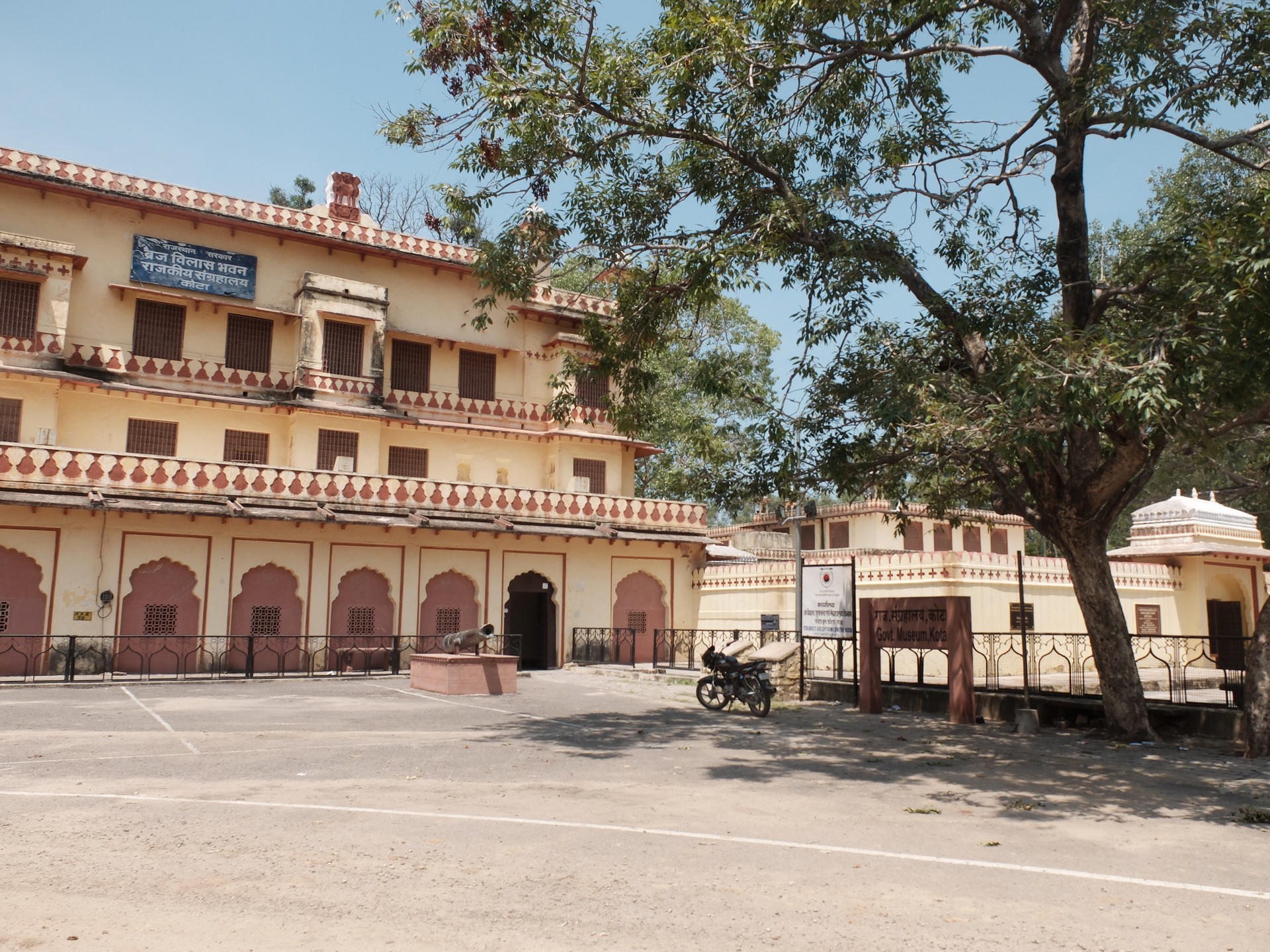
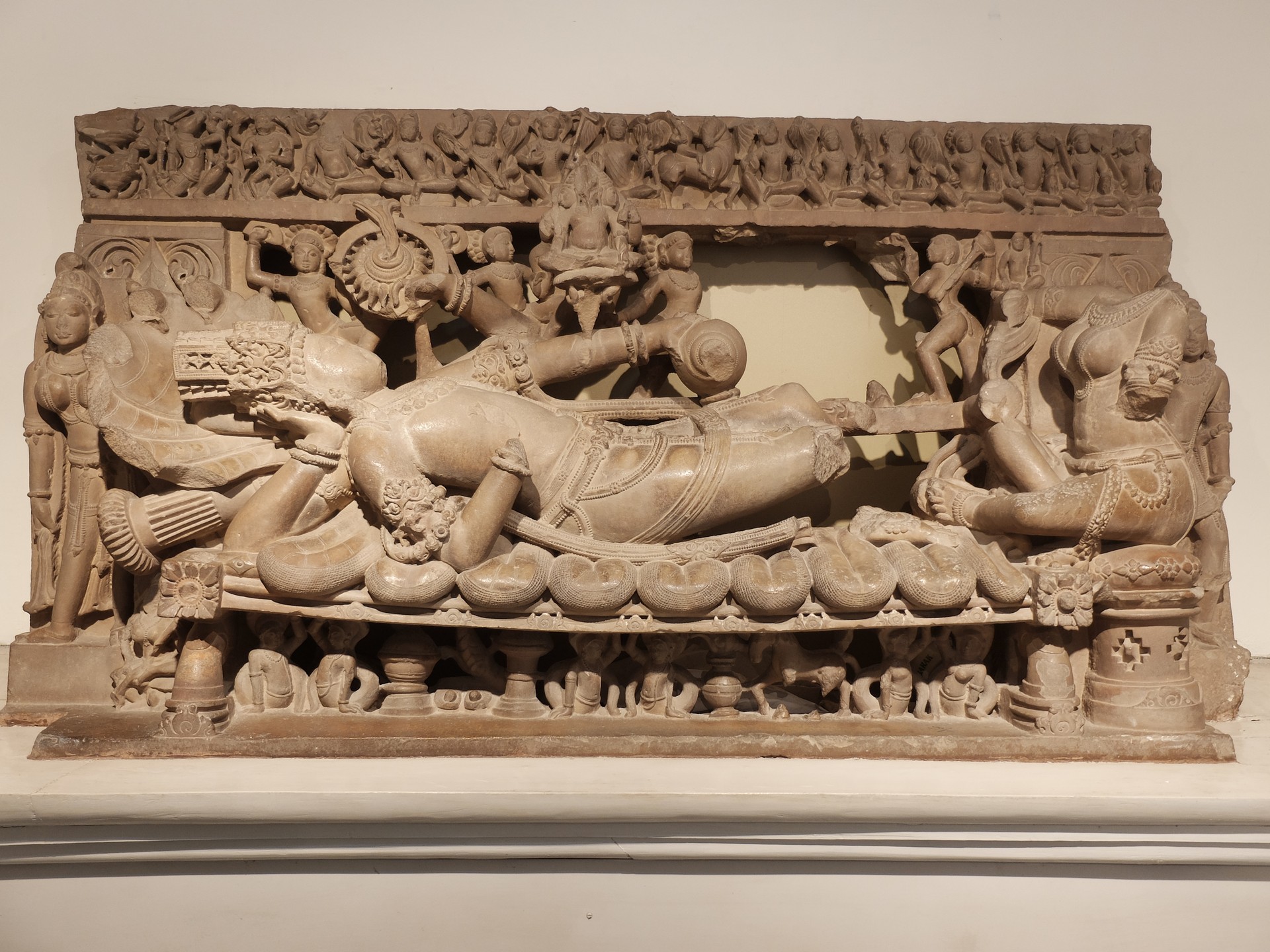
This is the most well-known sculpture in the collection and comes from Badoli (Chittorgarh) from the 9th-century temples. Vishnu is being sheltered by the Shesh Nag as he rests in its shadow. Ten incarnations of Vishnu are carved in the upper portion and 8 dikpalas which guard the cardinal points. Brahma is emerging from the navel of Vishnu. The Shesh Nag is a 1000 headed celestial snake that bears the universe on its head and is inextricably linked in Hindu mythology to the formation of the world.
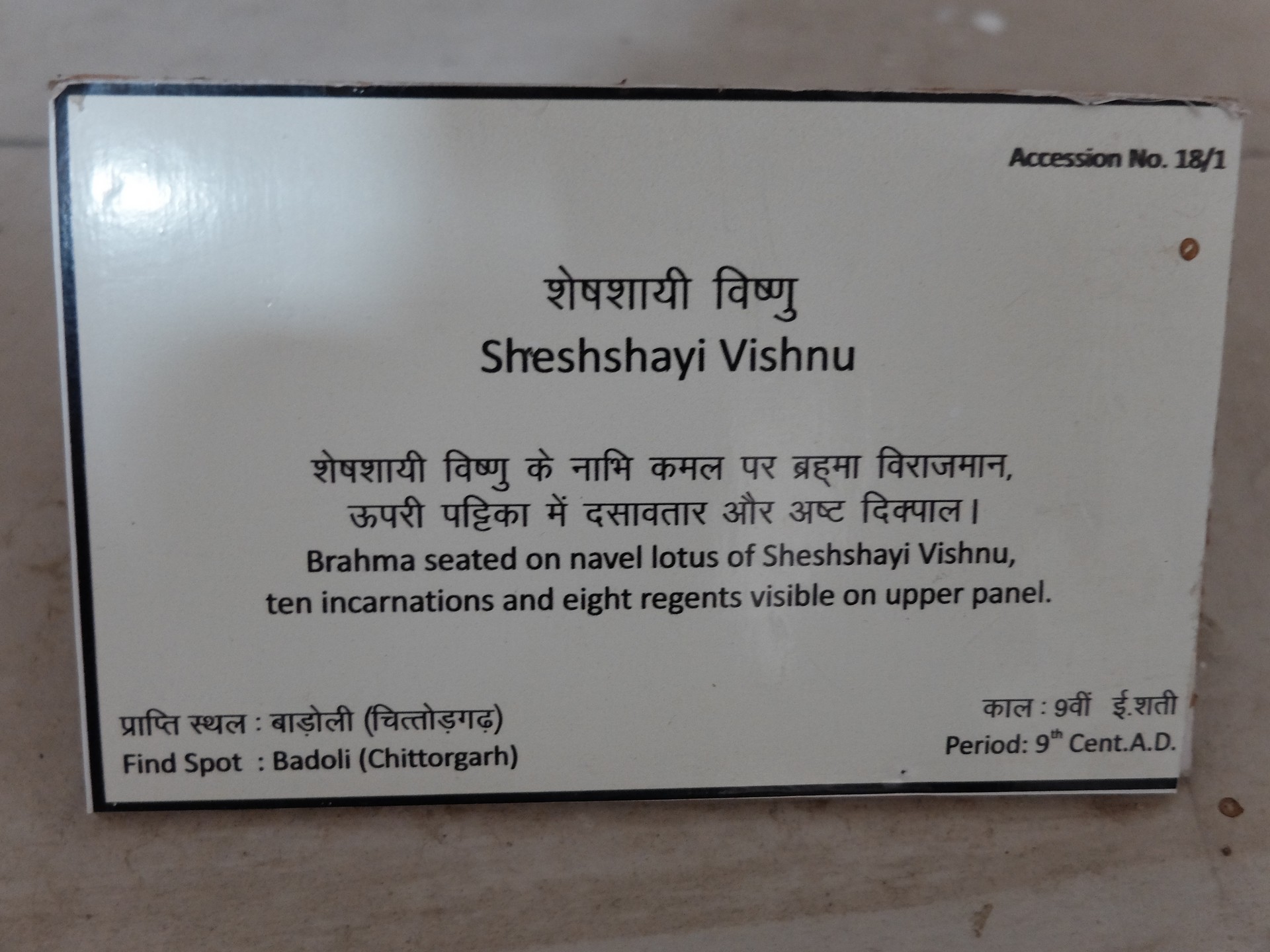
This is the most well-known sculpture in the collection and comes from Badoli (Chittorgarh) from the 9th-century temples. Vishnu is being sheltered by the Shesh Nag as he rests in its shadow. Ten incarnations of Vishnu are carved in the upper portion and 8 dikpalas which guard the cardinal points. Brahma is emerging from the navel of Vishnu. The Shesh Nag is a 1000 headed celestial snake that bears the universe on its head and is inextricably linked in Hindu mythology to the formation of the world.
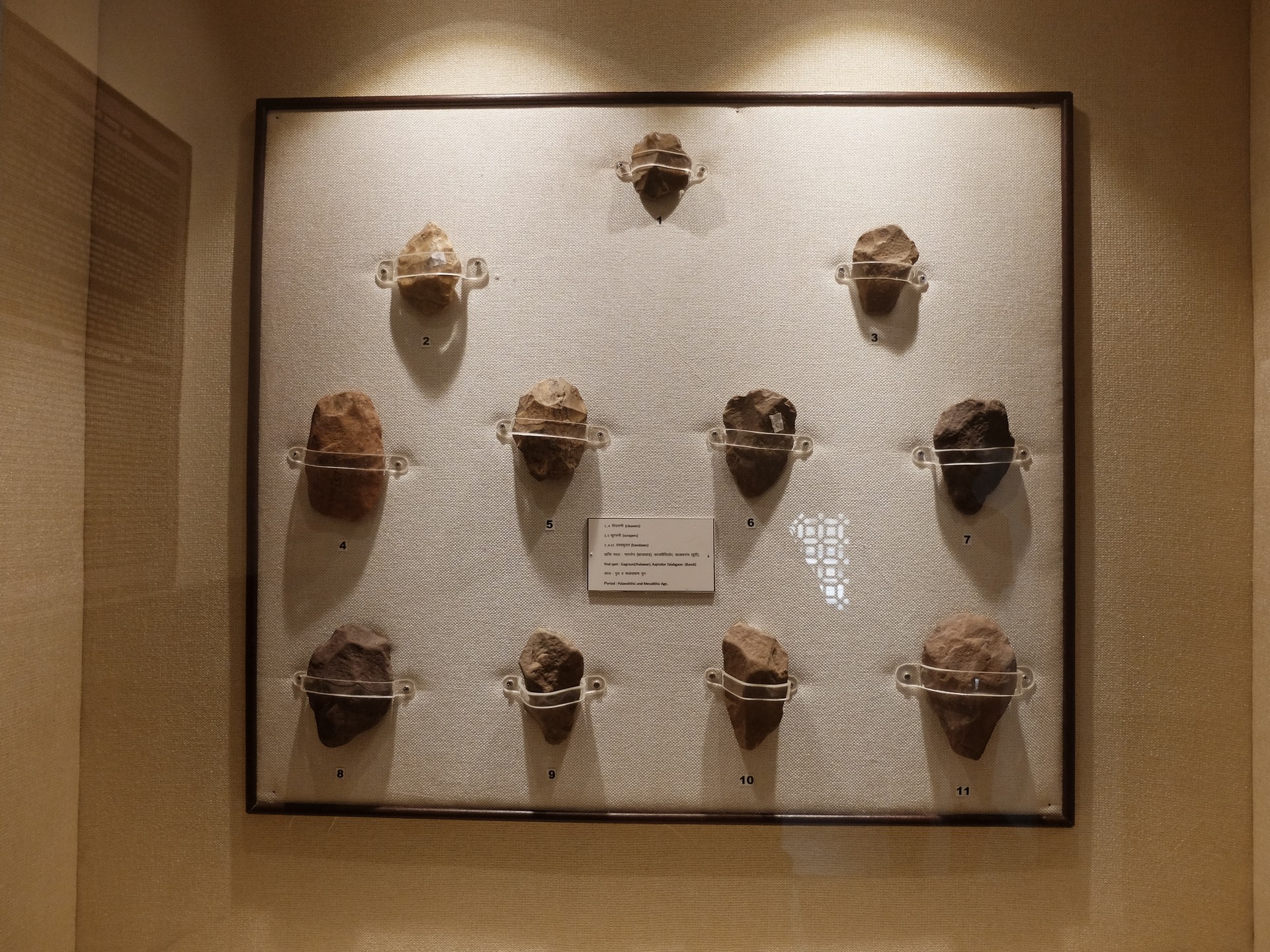
The Kota region, known as Hadoti, has been occupied by humans for hundreds of thousands of years as can be seen from the rock paintings found on rock shelters. O P Sharma, known as ‘Kukki’, who is a self-taught archaeologist living in Bundi, has found hundreds of rock paintings and thousands of pre-historic weapons and tools which could be up to one million years old. He has donated some hand axes and microliths to the Kota museum.
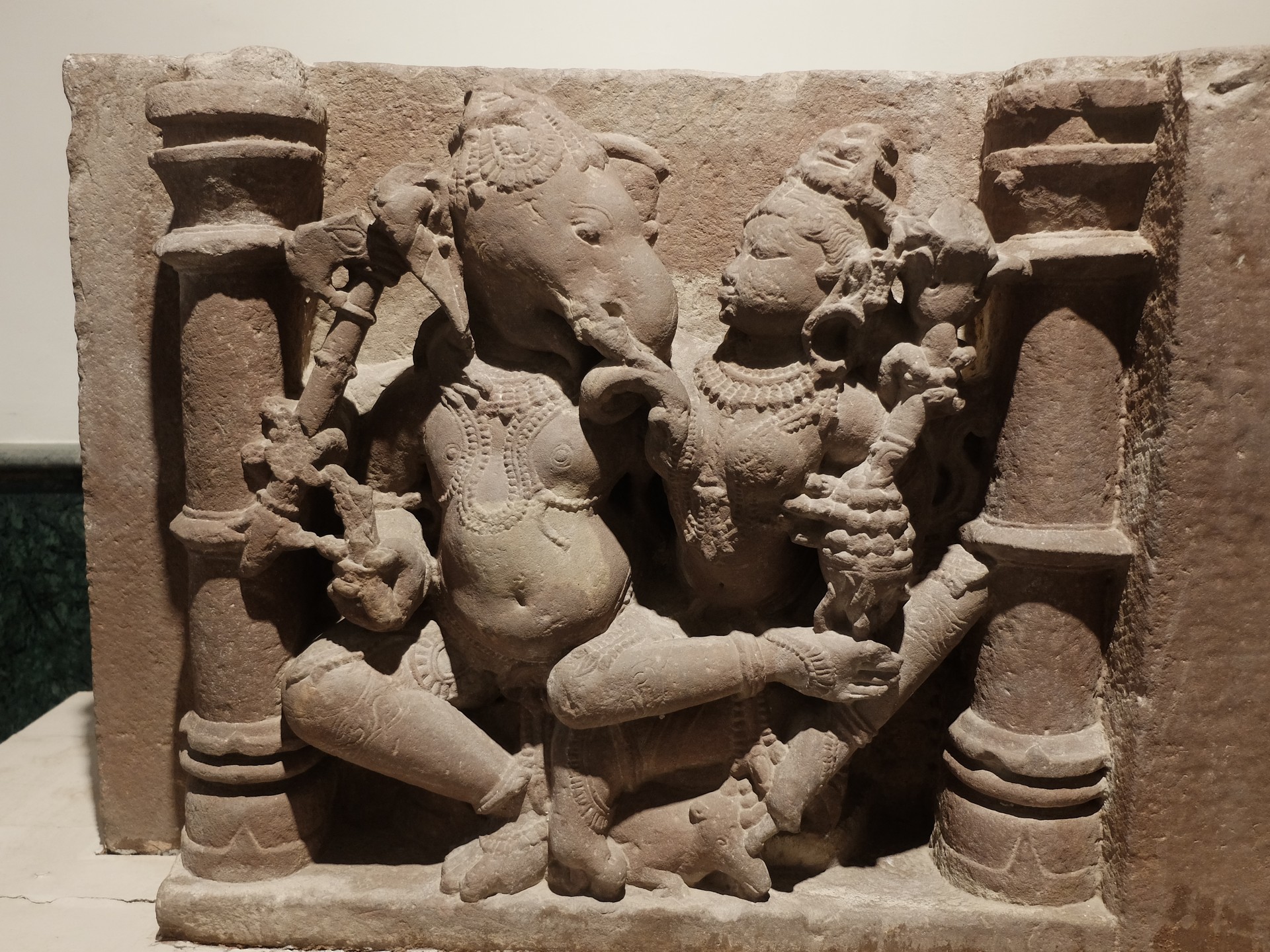
This delightfully intimate sculpture is from the 12th century A.D. temple at Kakoni (Baran) Ganesh is seated on his vehicle, a mouse, and holding a writing instrument, axe, lotus, pot of sweetballs and his consort with puckered lips about to bestow and receive a kiss.
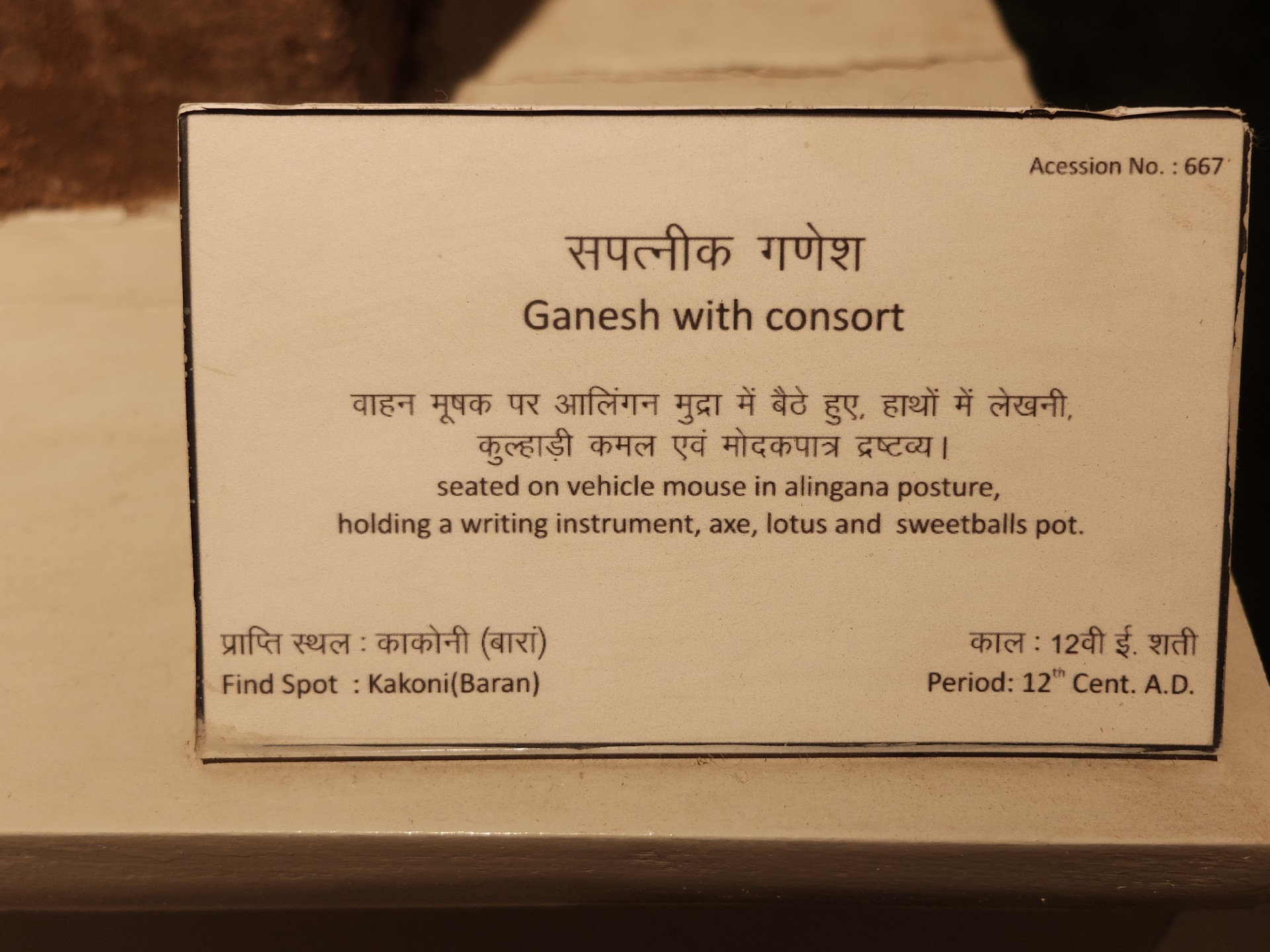
This delightfully intimate sculpture is from the 12th century A.D. temple at Kakoni (Baran) Ganesh is seated on his vehicle, a mouse, and holding a writing instrument, axe, lotus, pot of sweetballs and his consort with puckered lips about to bestow and receive a kiss.
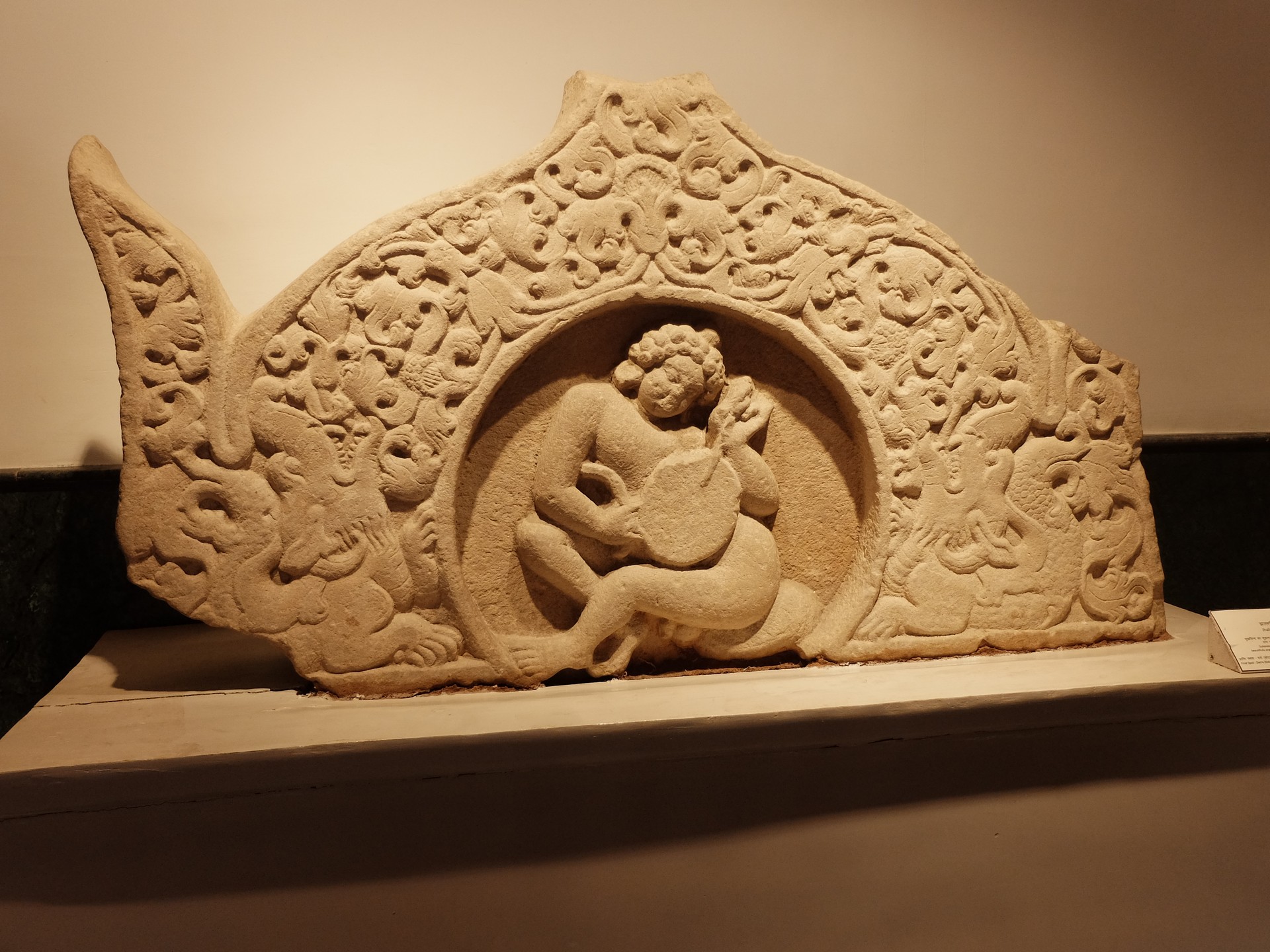
This carving is from the 5th century A.D. temple in Darra and shows a naked boy playing a musical instrument surrounded by elaborate and intricate carving.
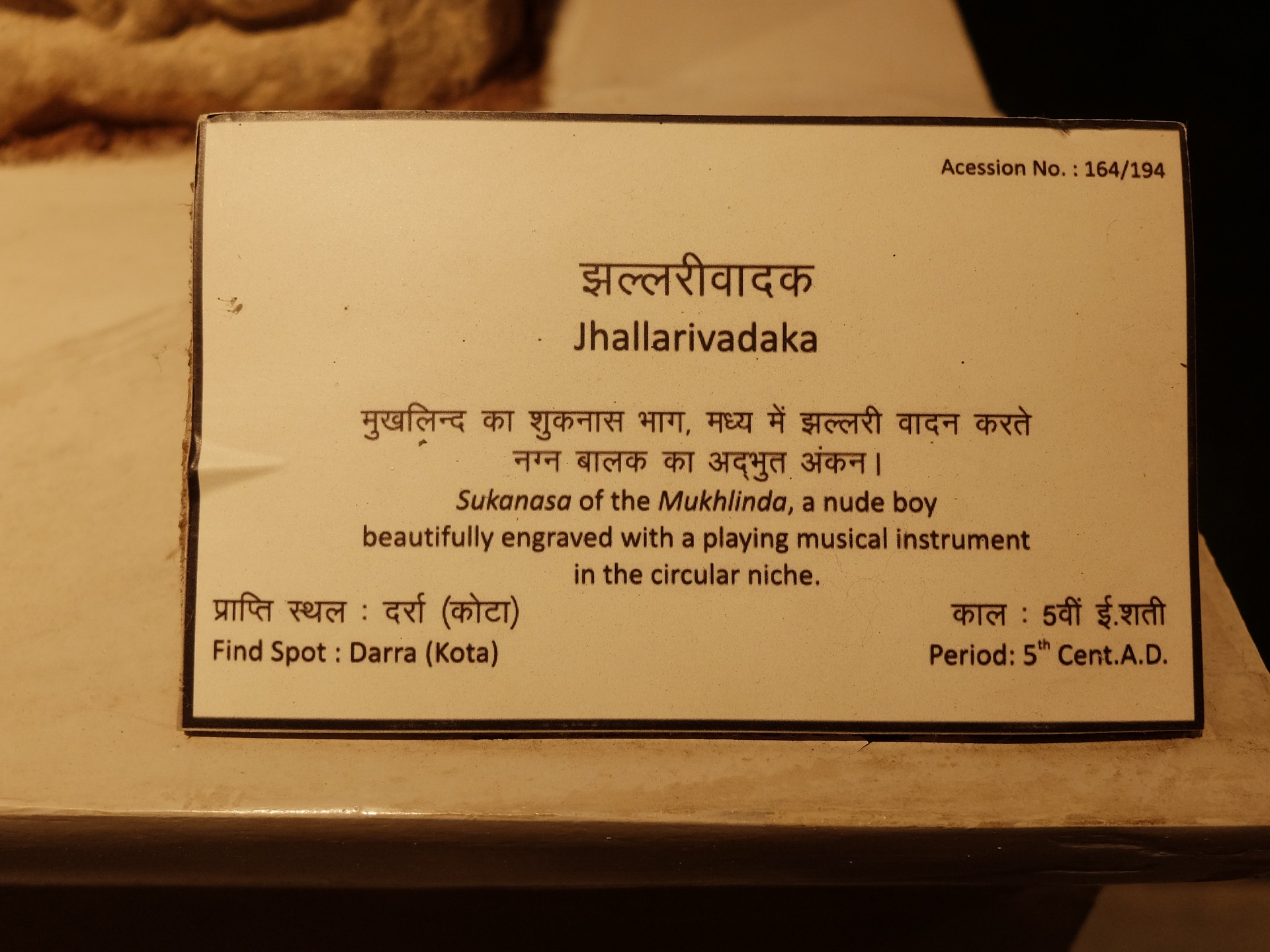
This carving is from the 5th century A.D. temple in Darra and shows a naked boy playing a musical instrument surrounded by elaborate and intricate carving.
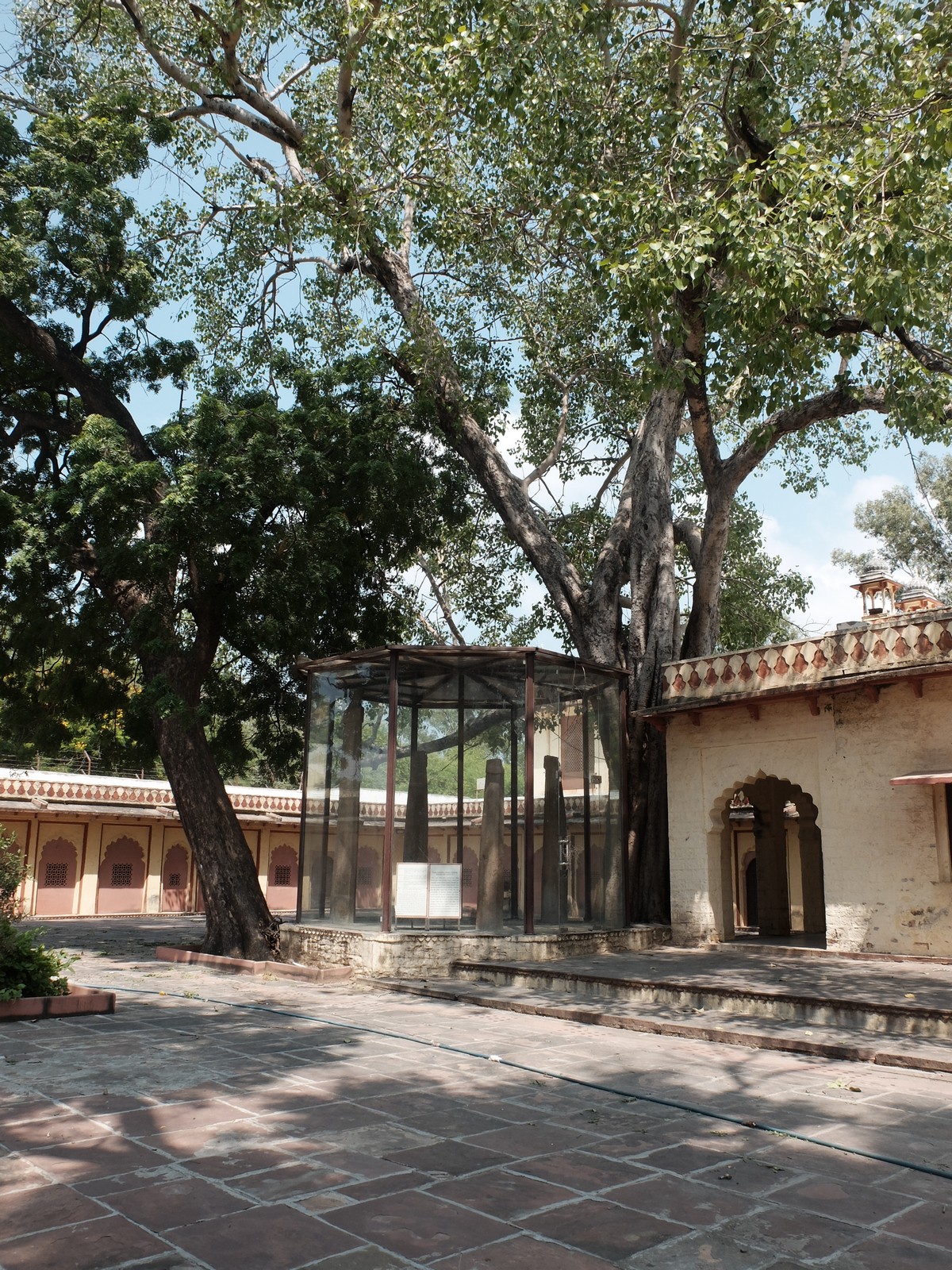
The four Yupa pillars in the cage are the oldest inscribed stones in the region and were brought to the museum when it was first started in 1946 from Badwa village in Baran district. They date from the Maukhari Dynasty and are carved with Brahmi script which unfortunately you can’t see because of the protective case around them. They show the prevalence of Vedic religious rituals at that time.
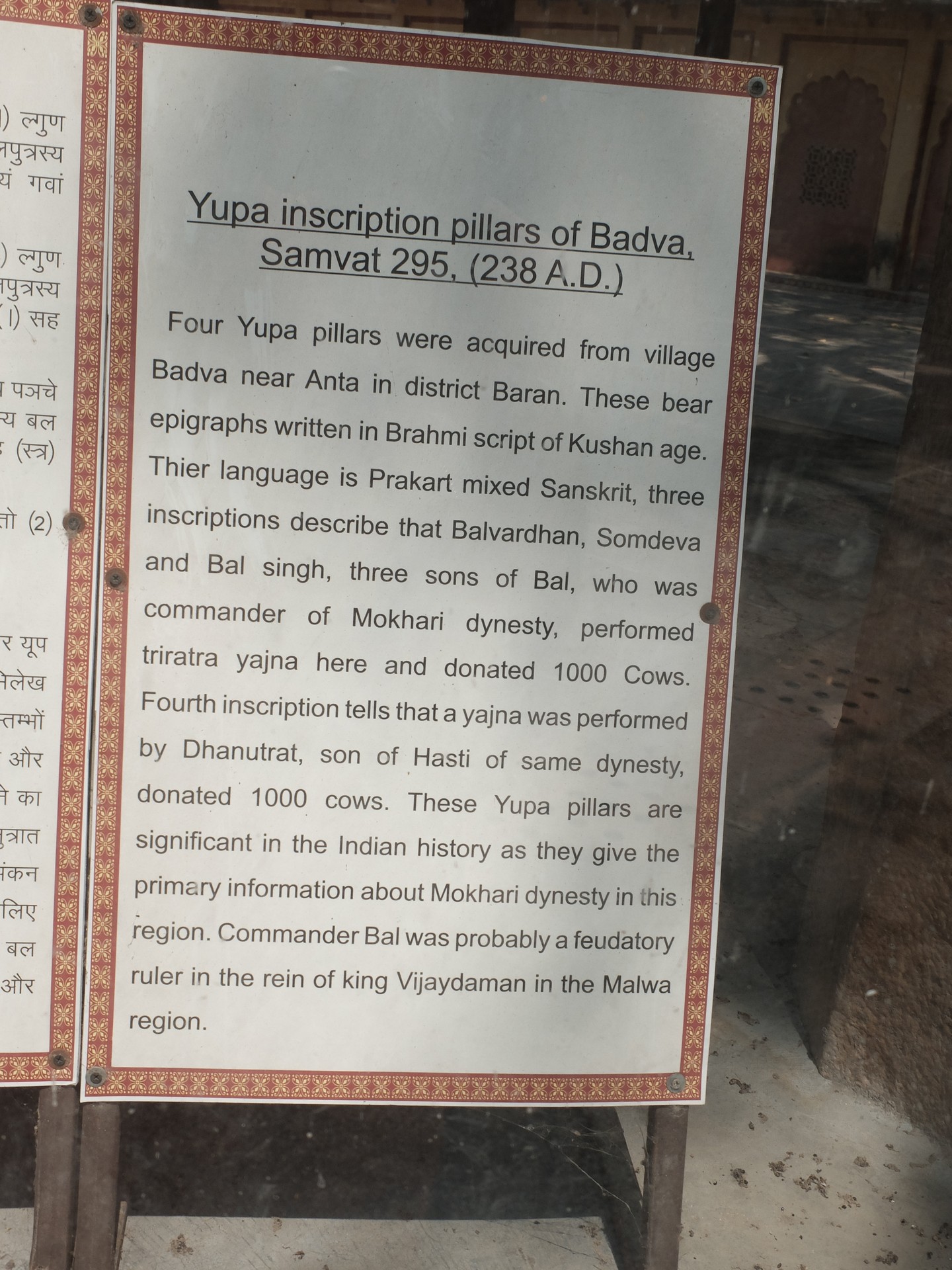
The four Yupa pillars in the cage are the oldest inscribed stones in the region and were brought to the museum when it was first started in 1946 from Badwa village in Baran district. They date from the Maukhari Dynasty and are carved with Brahmi script which unfortunately you can’t see because of the protective case around them. They show the prevalence of Vedic religious rituals at that time.
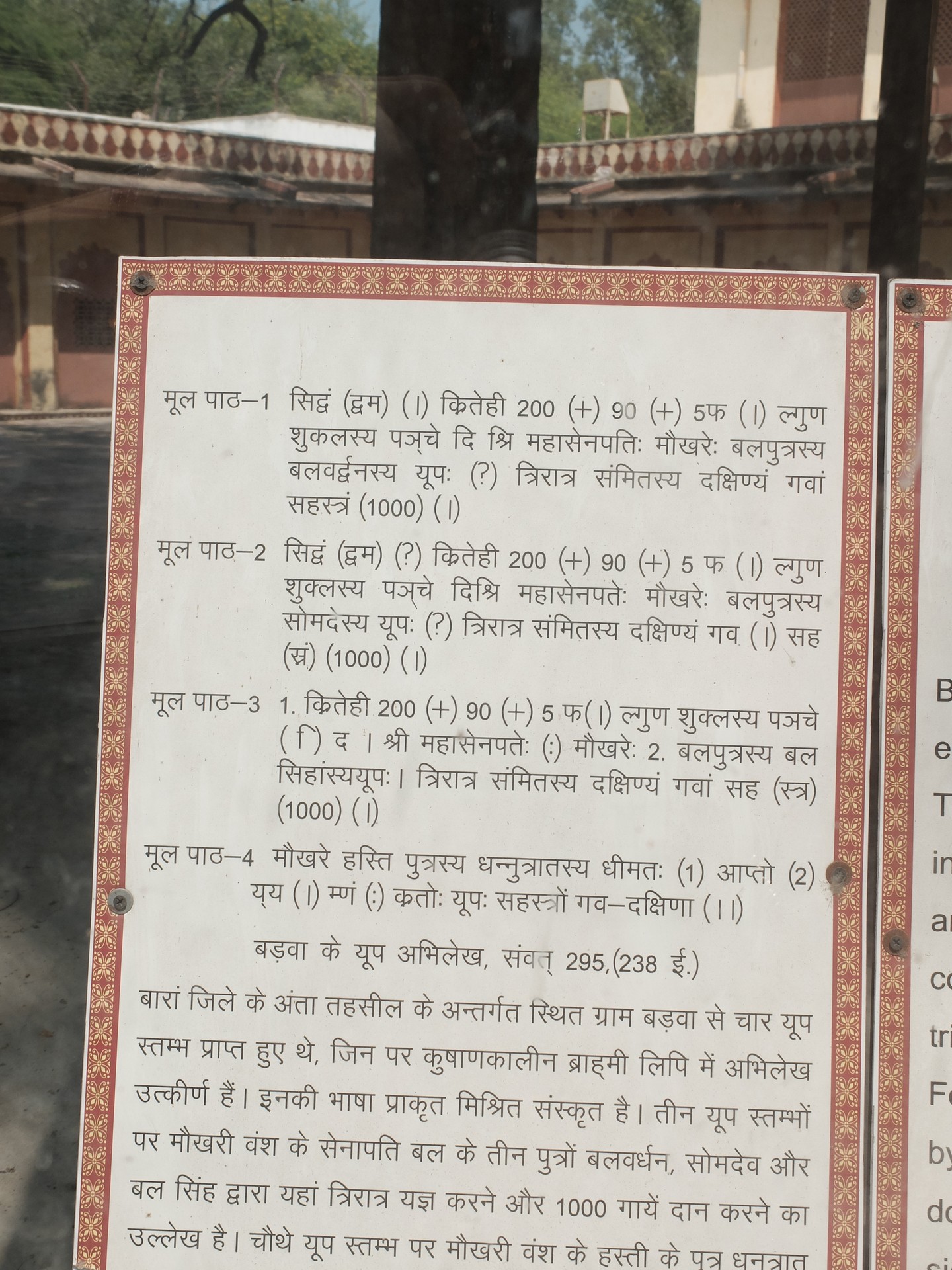
The four Yupa pillars in the cage are the oldest inscribed stones in the region and were brought to the museum when it was first started in 1946 from Badwa village in Baran district. They date from the Maukhari Dynasty and are carved with Brahmi script which unfortunately you can’t see because of the protective case around them. They show the prevalence of Vedic religious rituals at that time.
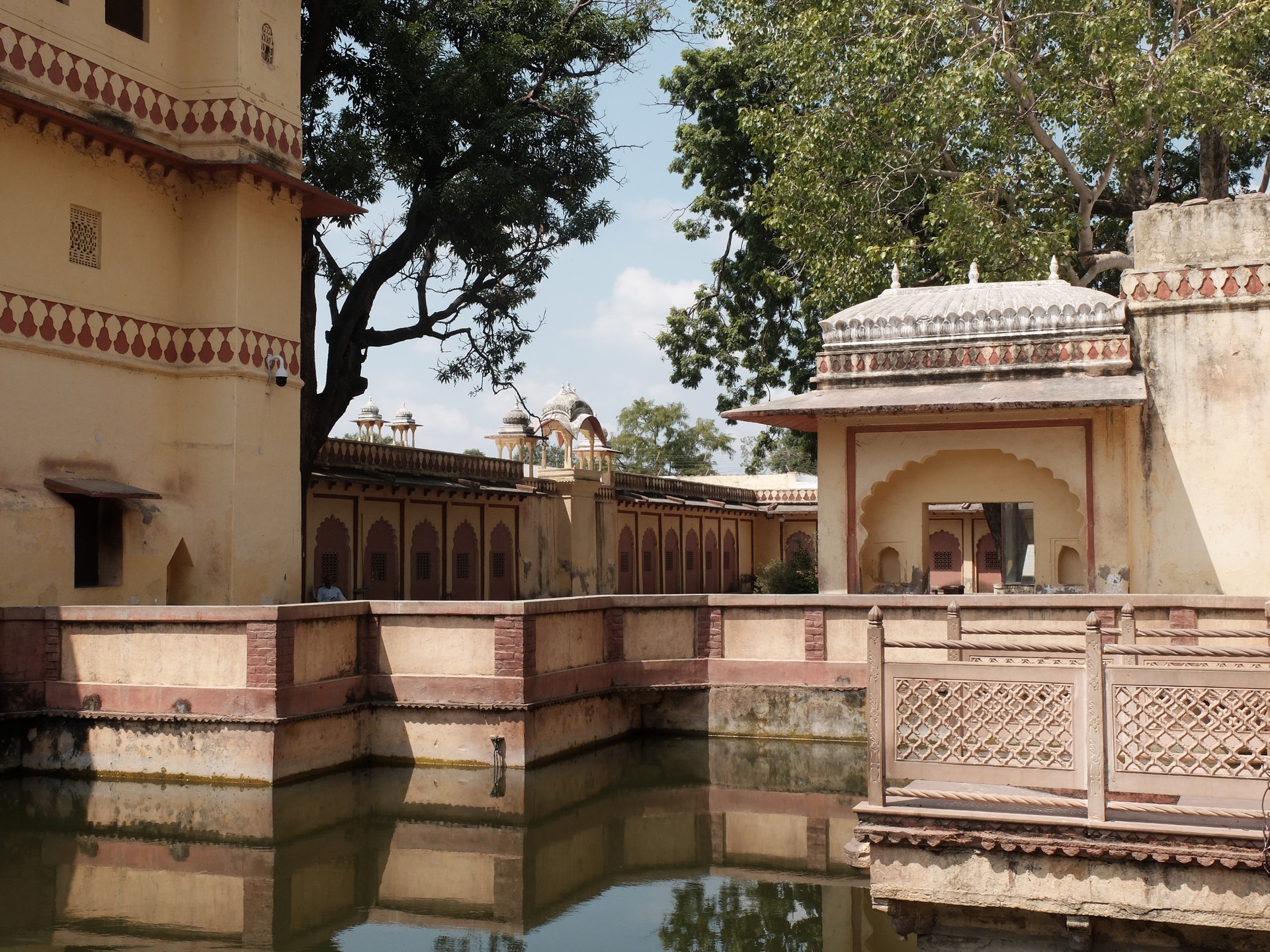
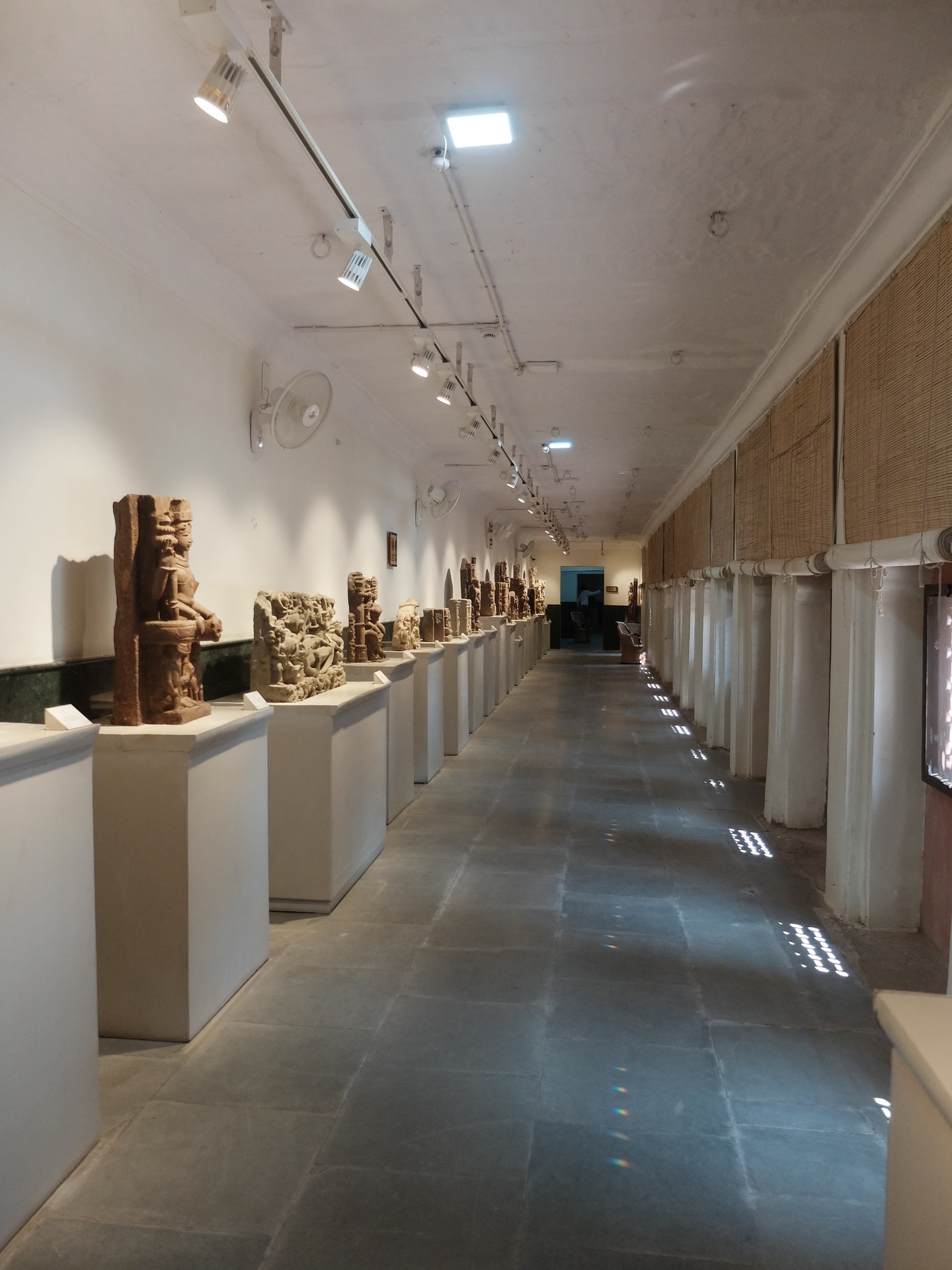
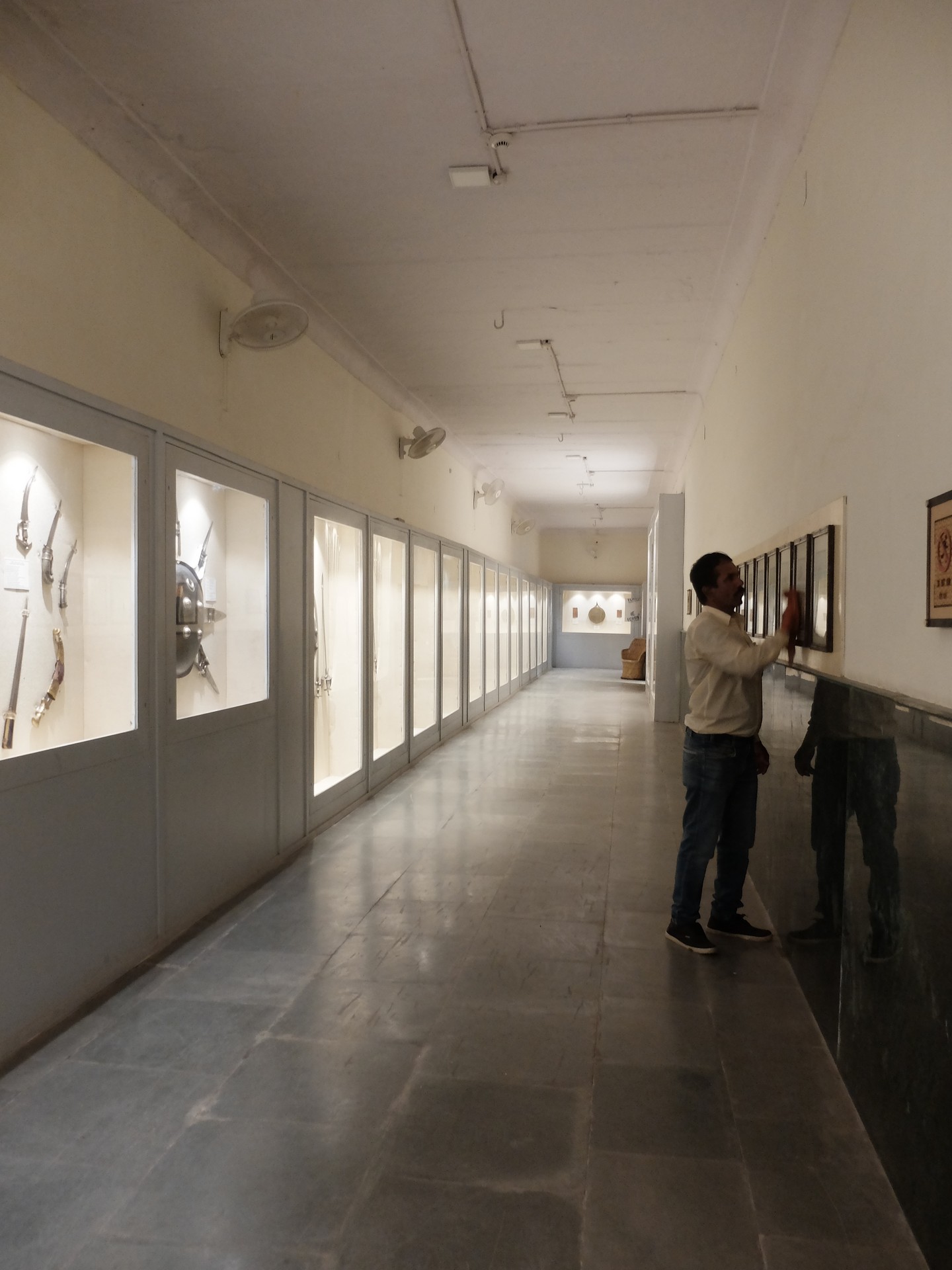
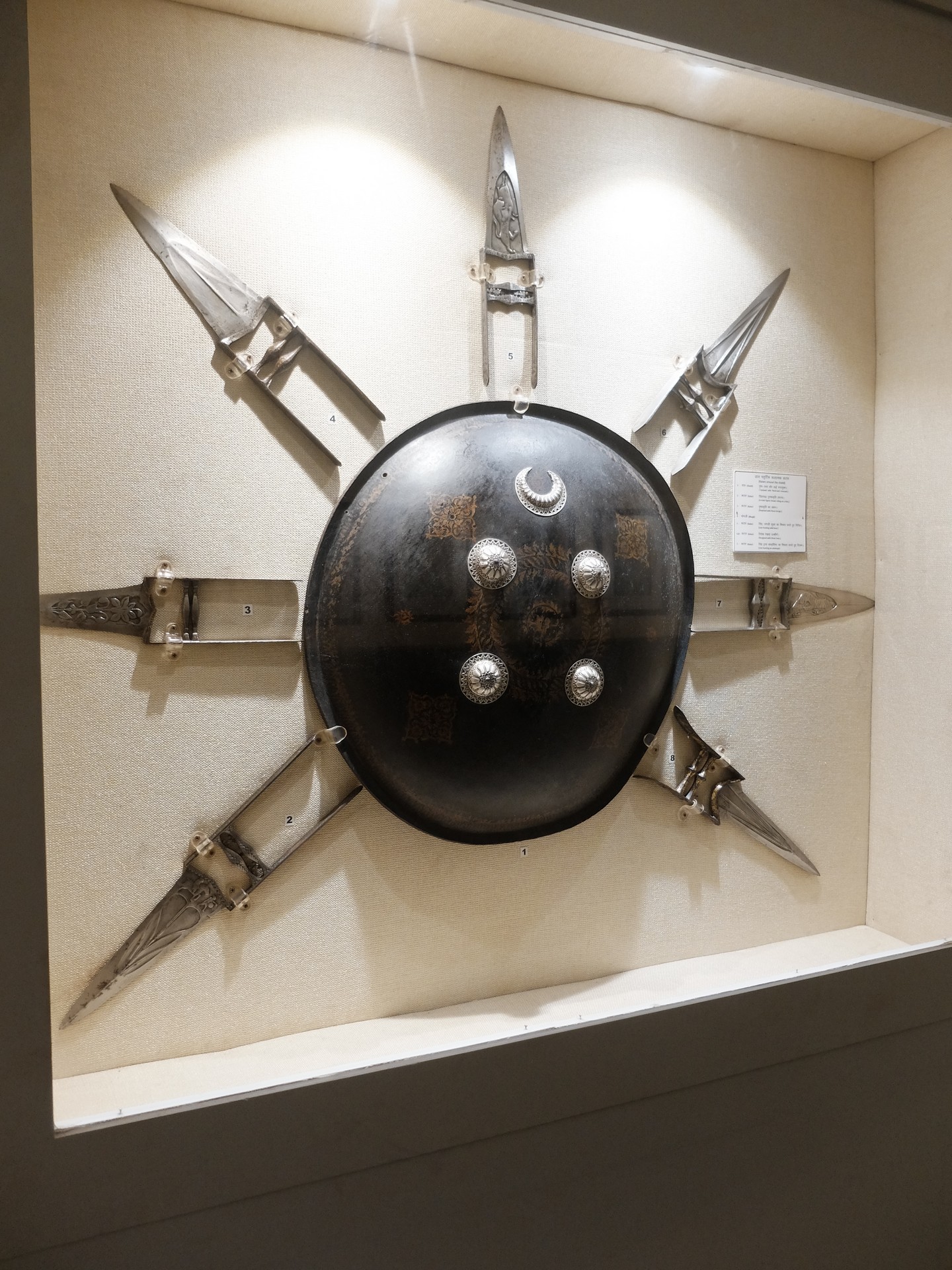
The traditional shield said to be made from rhinoceros hide surrounded by traditional but beautifully decorated daggers known as katars.
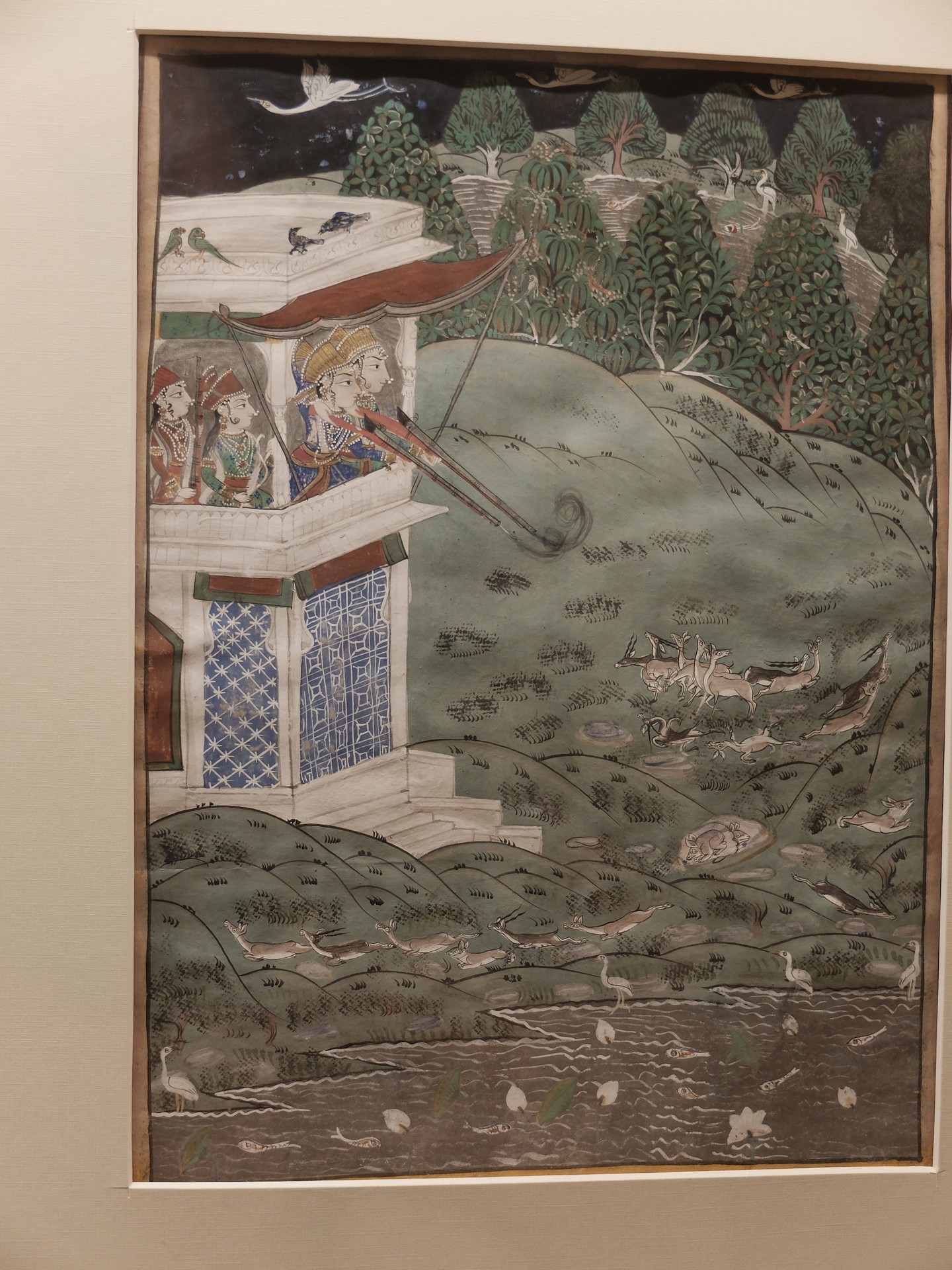
The miniature paintings gallery shows a few paintings from Kotah and most are from Bundi, which was established before Kotah and has the older artistic style, but this is a typical Kotah painting and shows two women shooting deer. The Kotah school is famous for the fluidity of lines and movement of animals. Many types of tree are shown and naturalistic wildlife.
Kota is well served by sleeper buses and local buses.
Nearest airport is either Udaipur 262kms (UDR) or Jaipur 243 kms (JAI)
2. The most famous sculpture is of Sheshashayi Vishnu. Vishnu is being shaded by Shesh Nag’s head and lying on its coils. Vishnu is supporting his own head with one of his hands as he lies in the shade of the cobra. Brahma is emerging on a lotus from his navel. This sculpture has been exhibited abroad.
3. The Museum is next to the Rajasthan Oriental Research Institute which houses many ancient and important manuscripts and palm-leaf books but which currently has no managerial staff. The Superintendant of the Museum has additional charge both for the Research Institute and for the recently restored Contemporary Art Gallery nearby which also has no staff.
